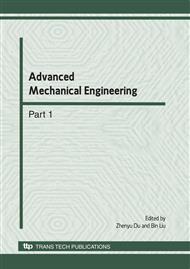p.940
p.944
p.948
p.952
p.956
p.962
p.967
p.971
p.976
Multiple Objective Robust Optimization Design of the Web Press’s Fold Mechanism
Abstract:
In most practical engineering optimal problems, the sensitivities of quality characteristics is affected by the deviation of design variables, and the evaluation of quality is multi-aspect. In web press’s fold mechanism design, the trace deviation and entrance angle in working state are important criterions which affect the folding knife’s kinematic performance. In order to improve the synthetic kinematics performance, a multiple objective robust optimum design model could be established, based on the analysis of sensitive response to the design variables and determining proper evaluation strategies. By comparing the results of multiple objective robust optimum design and common optimum design, we can find that the synthetic kinematics performance of multiple objective robust optimum design is much better.
Info:
Periodical:
Pages:
956-961
Citation:
Online since:
June 2010
Authors:
Price:
Сopyright:
© 2010 Trans Tech Publications Ltd. All Rights Reserved
Share:
Citation:


